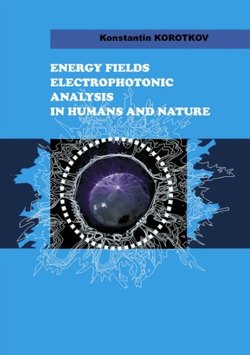Читать книгу Energy Fields Electrophotonic Analysis In Humans and Nature - Konstantin M.D. Korotkov - Страница 31
From the classical point of view migrational flights are impossible. Technically and scientifically speaking, they should fall into the sea halfway across and be drowned but they do not.
ОглавлениеBut birds do not know this, so they do and have been doing so for thousands of years!
Do they follow another set of physical laws than those affecting inanimate objects?
We do not believe that cells work as a “nuclear reactor,” but we assume that birds may extract energy directly from the air. Birds breathe using a unique system in which air follows a one-way route through the respiratory system. This system is unlike our lungs, in which the air backtracks where it came from. Their system of respiration (breathing) is very efficient - much more efficient than our system. Birds have two relatively small lungs (where gas exchange occurs), but the lungs are augmented by bellows-like air sacs (where no gas exchange occurs). These air sacs keep the lungs perpetually inflated (even when the bird is exhaling). Our lungs alternately fill and empty out. The bird's respiratory system takes up 20% of a bird’s volume (our respiratory system takes up only 5% of our volume). In the bird's respiratory system, air first flows through air sacs (located even inside their hollow bones) that direct fresh, oxygenated air into the tube-like lungs (parabronchi, where gas exchange occurs) both when the bird inhales and when it exhales. We assume that together with molecular oxidation there should exist some alternative way of O2 utilization, which provides metabolic energy.
than 180 kcal/mole upon its reduction to two water molecules after gaining four electrons (together with their carriers – protons). However, it cannot be spontaneously reduced, because according to Wigner spin conservation rules it cannot directly interact with singlet state molecules [Salem L. 1982], and that is one of the reasons of triplet oxygen stability. There are several ways to activate oxygen, and one of them – one-electron oxygen reduction. When electrons are taken by О2 one after another, intermediate products – reactive oxygen species (ROS) arise. Some of them are free radicals: chemical species, which unlike usual molecules possess an odd number of electrons at their valence electron shell. In the desire to get a pair for a lone electron free radicals avidly interact with the neighboring electron donors, which are normally represented by molecules. A free radical gains an electron from a molecule and turns into a molecule, while a molecule turns into a free radical and starts to look for another electron donor. Thus, free radicals may initiate chain reactions in solutions containing bioorganic molecules such as lipids, proteins, nucleic acids, carbohydrates. The best solution of this kind is blood [Voeikov V. 2001].
Radical chain reactions indeed damage important biological molecules in vitro, and ROS are traditionally regarded in biochemical literature as highly hazardous particles. However, a lot of old and recent data urge to assume that ROS are eminently needed for normal vital activity. According to some estimates, 10-15% of oxygen consumed by an animal at rest is routed to the univalent pathway of reduction, along which ROS are generated [Souza, H.P., et.al. 2002]. Under the stressful conditions, when activity of ROS-generating enzymes is amplified, the total oxygen consumption increases by nearly 20%, and supposedly all this excess is univalently reduced [Vlessis A.A. et al. 1995]. Therefore, ROS should play a very important role in normal physiology [Voeikov V. 2001].
Oxygen takes part in chain processes in the organism, which may be presented as follows [Voeikov V. 2001]:
branching. New radicals can recombine with other radicals present in the system and terminate the chain, which they lead. No less important is that the reactions of radical recombination have a unique property – quanta of energy released in such reactions may be equivalent to the energy of photons of visible or even UV-light. Gurwitsch [Gurwitsch A.G., Gurwitsch L.D. 1999] and Szent-Gyorgyi [Szent-Gyoergyi A. 1968] insisted that in the organized milieu of living systems the energy of electron excitation does not easily dissipate into heat, rather it may radiatively or in a radiation-less manner transfer to macromolecules, or to their ensembles. Energy packages equivalent to the energy of light photons released in the reactions of radical recombination may serve for biochemical reactions triggering, while their rhythmic release under certain conditions may suggest their role of pacemakers of metabolic processes [Voeikov, V. 2003].
In every chain reaction up to 8 eV of energy is realized [Voeikov, V. 2003]. For a bird consuming humid air during flight, this may create an extra source of electron-excited states for the generation of ATP in muscles. 1 eV is equal to 1.6*10-19 J, in 1 cm3 of air we have about 1016 oxygen molecules, so to generate 100 kJ a bird needs to process about 106 cm3 of air. During the flight, the respiratory rate of a little bird is 60-160 breathes per minute [McWilliams S. et al. 2003]. We may evaluate that a bird processes about 103 cm3 of air per minute. Therefore, to process 106 cm3 of air bird would need 103 minutes, or 16 hours. This number is quite compatible with duration of migratory flights.
The aim of the above reasoning was not to give detailed biophysical concept of energy transformation in the living system, but rather to pay attention of the reader to several important moments for the current state of biology and medicine.
1.Modern biophysical concepts are not defined yet; they do not give detailed understanding of most basic biological processes.
2.Biological organisms extract energy not only from food, but also directly from air, water, and the sun.
3.External stimuli play a fundamental bio-energetic role by activation of inner vital processes. We may tell that they operate as informational signals for stimulating inner reactions. In other words, subthreshold informational stimulation and consumption, activates a cascade of pro homeo-kinetic activity.
